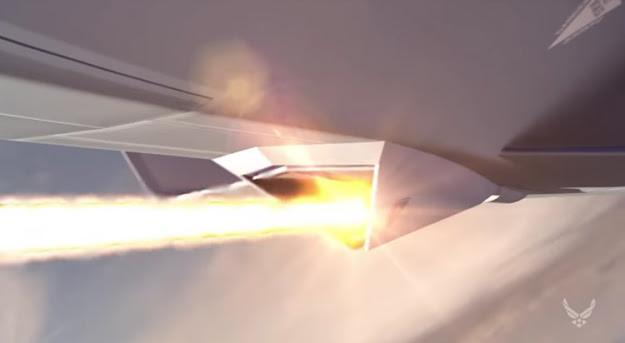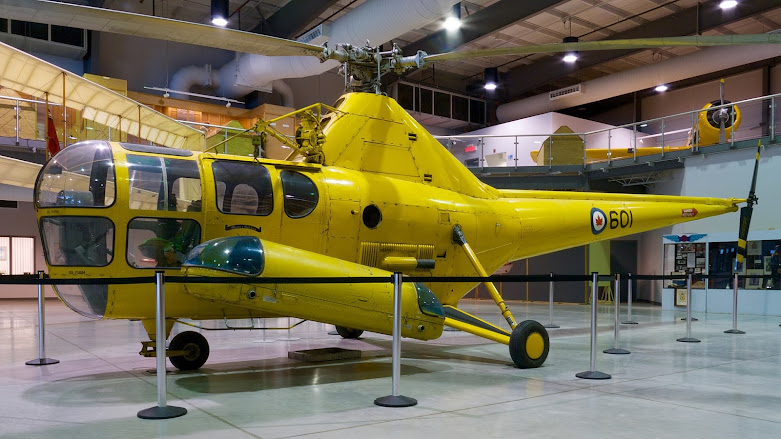La US NAVY sta mettendo a punto il prossimo caccia imbarcato per sostituire i Super Hornets a partire dagli anni ’30.
Il nuovo caccia sarà equipaggiato e avrà un raggio d'azione più ampio rispetto agli F35 C. La Marina, a fronte di un calo di budget nel corso degli anni '20 e ad un breve ciclo di sviluppo, potrebbe rivolgersi a un volto familiare per ottenere rapidamente un "nuovo jet” imbarcato; sta finalmente gettando le basi per schierare un nuovo jet da combattimento nel prossimo decennio denominato “Next Generation Air Dominance”, destinato a sostituire l' F / A-18E / F Super Hornet a partire dagli anni 2030. Ma un budget per la difesa in calo e un calendario troppo stringato potrebbero significare che il miglior candidato è ... l'F-35.
Le portaerei dell’US Navy normalmente imbarcano quattro squadroni di jet da combattimento come parte dei gruppi di volo imbarcati. In questo momento, tutti e quattro gli squadroni utilizzano l'F / A-18E / F Super Hornet. Nel corso del prossimo decennio, la Marina statunitense ritirerà i Super Hornet più vecchi a favore della variante basata su portaerei dell’F-35: la F-35C. Entro il 2030, un gruppo di volo delle portaerei sarà composto da circa due squadroni di Super Hornet aggiornati, il Blocco III e due squadroni di F-35C.
La Marina USA vuole un nuovo caccia negli anni 2030 per sostituire il Blocco III denominato Next Generation Air Dominance (NGAD). Il caccia sarebbe il primo nuovo jet da combattimento del Pentagono dall’introduzione in servizio dell’F-35 che ha impiegato più di 20 anni per trasformare i progetti in un caccia operativo. Durante tale periodo, gli Stati Uniti sono passati da un'era di relativa pace come unica superpotenza incontrastata al presente, dove una Russia aggressiva e l'esercito cinese in espansione stanno emergendo come concorrenti strategici di primo livello.
Fin dall'inizio, l'F-35 è stato bloccato in scelte progettuali che avevano senso in un periodo di non concorrenza, come un raggio relativamente breve, una bassa velocità supersonica e un piccolo vano interno per le armi. Se il Pentagono avesse saputo a metà degli anni '90 quello che sa oggi, avrebbe sicuramente richiesto un aereo molto diverso: l’NGAD è un'opportunità per costruire quell'aereo. La Marina vuole un caccia con equipaggio, al contrario di un veicolo aereo senza equipaggio. Vuole anche una autonomia fino al 50% maggiore. Un raggio più lungo consentirà all'NGAD di combattere più lontano dalla portaerei, aiutando a mantenere le portaerei fuori dalla portata delle armi nemiche come i missili balistici anti-nave cinesi. La Us navy ha bisogno di un caccia completamente nuovo, un cosiddetto design "clean sheet" che non è un derivato di un aereo esistente. Ciò consentirebbe alla Marina di costruire esattamente l'aereo che desidera.
Come potrebbe essere un nuovissimo NGAD?
L'aereo potrebbe essere un caccia multiruolo bimotore, in grado di affrontare ruoli aria-aria e aria-terra nella stessa missione. Dovrà essere furtivo, incorporando la più recente tecnologia di riduzione delle firme radar. Sarà quasi certamente un aereo di grandi dimensioni, sia per ospitare serbatoi di carburante più grandi che per un vano armi interno più ampio.
Mentre i caccia di terza e quarta generazione potrebbero facilmente estendere il loro raggio d'azione e il carico delle armi utilizzando serbatoi di carburante e munizioni in fusoliera e sulle ali, i caccia di quinta e sesta generazione devono trasportare entrambi internamente per preservare la forma furtiva dell'aereo. Un caccia più recente può avere un raggio d’azione minore e trasportare meno armi, ma è un compromesso calcolato per garantire che aereo e pilota sopravvivano per effettuare più sortite in combattimento.
Anche se la Marina vuole un caccia tutto nuovo, non è chiaro se si verificherà. I caccia di quinta generazione, tra cui l' F-22, l'F-35, il Su-57 russo e il J-20 cinese sono macchine immensamente complicate che richiedono un decennio o più per svilupparsi. Gli esperti ritengono già che il budget della difesa del 2022 sarà piatto o subirà un taglio del 5%, a seconda che un repubblicano o un democratico vadano alla Casa Bianca.
L'entità del deficit del bilancio federale e l'impatto della pandemia COVID-19 sull'economia americana avranno inevitabilmente un impatto sul bilancio della difesa degli Stati Uniti per tutto il 2020. Il tempo e le pressioni di bilancio stanno iniziando a accumularsi contro il nuovo piano.
Di conseguenza, la Marina potrebbe essere costretta ad accettare un derivato dell'F-35.
Un nuovo motore a ciclo adattivo o variabile, attualmente in fase di sviluppo, aggiungerà un terzo flusso al design esistente del motore turbofan post-combustione, consentendo al pilota di ottimizzare il motore per alte prestazioni o lungo raggio. La General Electric sta attualmente sviluppando un motore a ciclo adattivo per l'F-35 che aumenterà l'autonomia del jet del 35%.
Una riprogettazione parziale della fusoliera dell'aereo potrebbe aumentare la fornitura interna di carburante dell'F-35, consentendo al nuovo aereo di raggiungere l'obiettivo di aumentare l’autonomia in combattimento del 50%. Un aggiornamento dell'avionica, del sistema informatico e forse anche un'arma laser a bordo dell'F-35 completerebbe quello che alla fine potrebbe essere chiamato “F-35D”.
La prospettiva di un nuovo jet da combattimento statunitense è entusiasmante, ma le aspettative dovrebbero essere mitigate rispetto alla realtà. Sviluppare un nuovo caccia è esponenzialmente più difficile di mezzo secolo fa, e potrebbero esserci meno soldi per farlo rispetto a quanto previsto dalla Marina. Il lato positivo è che potrebbe finalmente materializzarsi l'opportunità di costruire un F-35 che soddisfi veramente tutti gli utilizzatori.
ENGLISH
The Navy Is Finally Creating America's Next Fighter Jet
The Navy wants a new fighter jet to replace Super Hornets starting in the 2030s.
The new fighter will be crewed and have a longer range than the F-35.
The Navy, faced with declining budgets through the 2020s and a short development cycle, may turn to a familiar face to get a “new jet” quickly.
The U.S. Navy is laying the groundwork to field a new fighter jet sometime in the next decade. The Next Generation Air Dominance fighter, meant to replace the F/A-18E/F Super Hornet, should start flying off America’s aircraft carriers in the 2030s. But a declining defense budget and short timetable could mean the best candidate is ... the F-35.
U.S. Navy aircraft carriers typically embark four squadrons of fighter jets as part of the carrier air wing. Right now, all four squadrons fly the F/A-18E/F Super Hornet. Over the course of the next decade, the Navy will retire older Super Hornets in favor of the carrier-based variant of the F-35, the F-35C. By the 2030s, a carrier air wing should consist of about two squadrons of upgraded Super Hornets, the Block III, and two squadrons of F-35Cs.
The Navy wants a new fighter in the 2030s to replace Block III. Now, according to USNI News, the Navy has stood up the program to oversee development of the fighter, which it calls Next Generation Air Dominance (NGAD). The fighter would be the Pentagon’s first new fighter jet since the F-35.
The F-35 fighter jet took more than 20 years to take from blueprints to an operational fighter. During that time, the U.S. went from an era of relative peace as the sole unchallenged superpower to the present, where an aggressive Russia and surging Chinese military are emerging as strategic competitors.
From early on, the F-35 was locked into design choices that made sense in a period of non-competition, such as relatively short range, low supersonic speed, and a small internal weapons bay. If the Pentagon knew in the mid-1990s what it knows today, it might have asked for a vastly different airplane.
The NGAD is a chance to build that airplane. The Navy wants a crewed fighter, as opposed to an uncrewed aerial vehicle. It also wants up to 50 percent greater range. A longer range will enable the NGAD to fight farther from the aircraft carrier, helping keep the big ship out of range of enemy weapons such as Chinese anti-ship ballistic missiles. The Navy needs an entirely new fighter, a so-called “clean sheet” design that isn’t a derivative of an existing aircraft. This would allow the Navy to build exactly the plane it wants.
What might an all-new NGAD look like? The aircraft could be a two engine, multi-role fighter, capable of tackling air-to-air and air-to-ground roles in the same mission. It would be stealthy, incorporating the latest radar-signature-reducing technology. It would almost certainly be a large plane, both to accommodate larger fuel tanks and a larger internal weapons bay.
While third- and fourth-generation fighters could easily extend their range and weapons load by hanging fuel tanks and munitions off the fuselage and wings, fifth- and sixth-generation fighters must carry both internally to preserve the airplane’s stealthy shaping. A newer fighter may have a shorter range and carry fewer weapons, but it’s a calculated tradeoff to ensure airplane and pilot will survive to fly more combat sorties.
This content is imported from {embed-name}. You may be able to find the same content in another format, or you may be able to find more information, at their web site.
While the Navy wants an all-new fighter, it’s not clear that will actually happen. Fifth-generation fighters, including the F-22, F-35, Russia’s Su-57, and the Chinese J-20 are immensely complicated machines that take a decade or more to develop. Already, experts believe the 2022 defense budget will be flat or suffer a 5 percent cut, depending on whether a Repubican or Democrat wins the White House.
The size of the federal budget deficit, and the impact of the COVID-19 pandemic on America's economy, will inevitably impact the U.S. defense budget throughout the 2020s. Time and budgetary pressures are beginning to stack up against the new plane.
As a result, the Navy might eventually be forced into accepting a derivative of the F-35.
A new adaptive cycle engine, currently under development, adds a third stream to the existing afterburning turbofan engine design, allowing a pilot to optimize the engine for high performance or long range. General Electric, which is developing an adaptive cycle engine for the F-35, believes the new engine will increase the jet’s range by 35 percent.
A partial redesign of the plane’s fuselage could increase the F-35’s internal fuel supply, allowing the new plane to reach the 50 percent range increase goal. An update of the F-35’s avionics, computer system, and perhaps even an onboard laser weapon would round out what might eventually be called the F-35D.
The prospect of a new American fighter jet is an exciting one, but expectations should be tempered against reality. Developing a new fighter is exponentially more difficult than it was a half century ago, and there might well be less money to do so than the Navy anticipates. On the bright side, it might finally be the opportunity to build a F-35 that satisfies everyone.
(Web, Google, Wikipedia, Popular Mechanics, You Tube)

























































